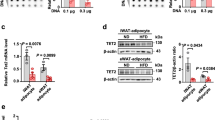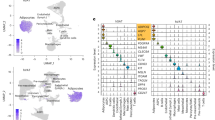Abstract
People with upper body or visceral obesity have a much higher risk of morbidity and mortality from obesity-related metabolic disorders than those with lower body obesity. In an attempt to develop therapeutic strategies targeting visceral obesity, depot- specific differences in the expression of genes in omental and subcutaneous adipose tissues were investigated by DNA array technology, and their roles in adipocyte differentiation were further examined. We found that levels of metallothionein-II (MT-II) mRNA and protein expression were higher in omental than in subcutaneous adipose tissues. The study demonstrates that MT-II may play an important role in adipocyte differentiation of 3T3L1 preadipocytes, and that N-acetylcysteine (NAC) inhibits the adipocyte differentiation of 3T3L1 cells by repressing MT-II in a time- and dose-dependent manner. Furthermore, the intraperitoneal administration of NAC to rats and mice resulted in a reduction of body weights, and a marked reduction in visceral fat tissues. These results suggest that MT-II plays important roles in adipogenesis, and that NAC may be useful as an anti-obesity drug or supplement.
Similar content being viewed by others
Article PDF
Author information
Authors and Affiliations
Rights and permissions
This is an Open Access article distributed under the terms of the Creative Commons Attribution Non-Commercial License (http://creativecommons.org/licenses/by-nc/3.0/) which permits unrestricted non-commercial use, distribution, and reproduction in any medium, provided the original work is properly cited.
About this article
Cite this article
Kim, JR., Ryu, HH., Chung, H. et al. Association of anti-obesity activity of N-acetylcysteine with metallothionein-II down-regulation. Exp Mol Med 38, 162–172 (2006). https://doi.org/10.1038/emm.2006.20
Published:
Issue date:
DOI: https://doi.org/10.1038/emm.2006.20
Keywords
This article is cited by
-
Chronic N-acetylcysteine treatment alleviates acute lipopolysaccharide-induced working memory deficit through upregulating caveolin-1 and synaptophysin in mice
Psychopharmacology (2018)
-
Metallothioneins 1 and 2, but not 3, are regulated by nutritional status in rat white adipose tissue
Genes & Nutrition (2016)
-
Obésité et stress oxydant
Obésité (2014)
-
Cysteine and Obesity
Obesity (2012)
-
Polyamine metabolism is involved in adipogenesis of 3T3-L1 cells
Amino Acids (2012)



